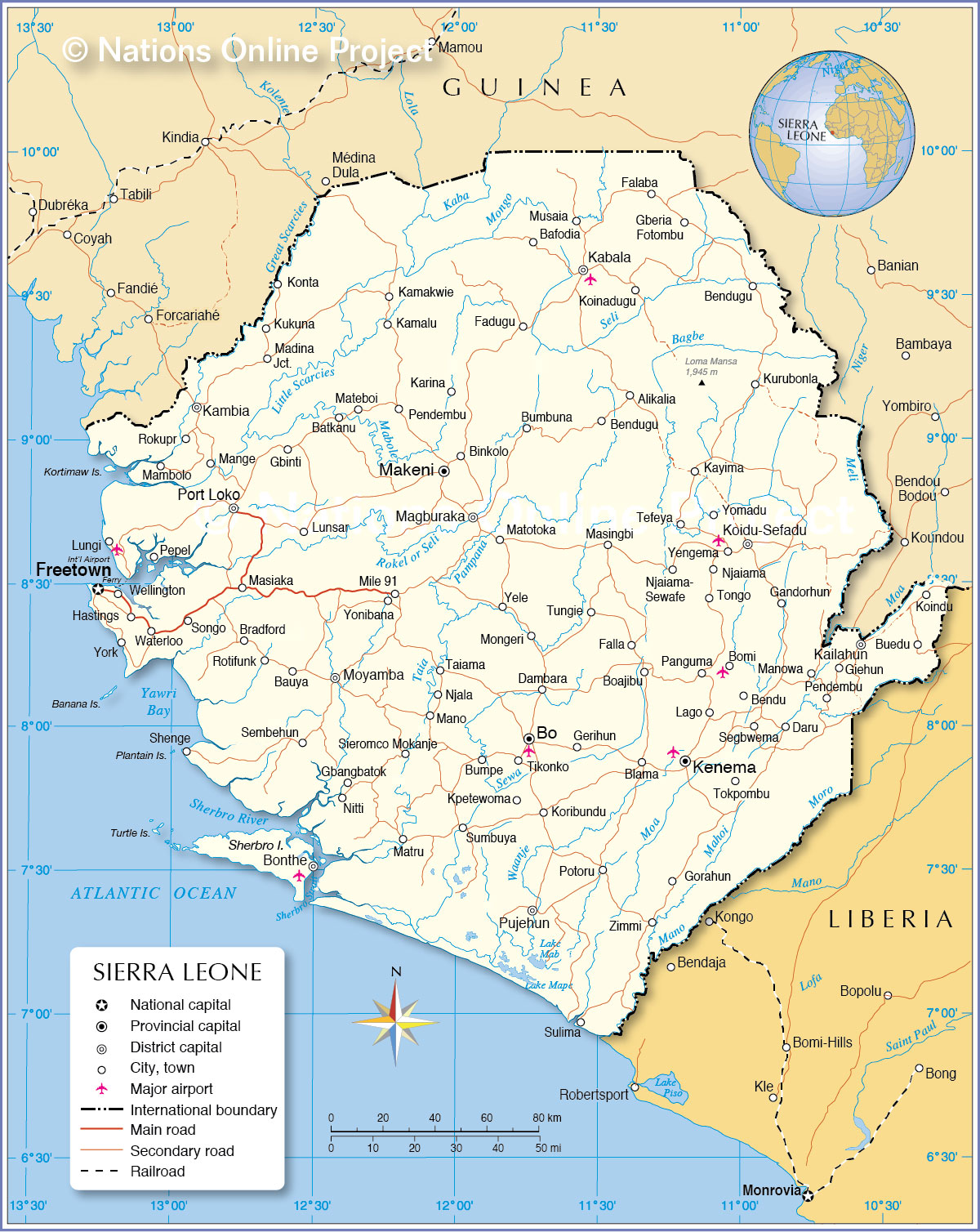Krio – Sierra Leonean
Historical and Linguistic Background
Sierra Leone, West Africa
Krio is the unofficial language spoken in Sierra Leone. Sierra Leone is a small coastal country in West Africa, neighboring Guinea and Liberia (for extensive review see Sesay et al., 2019).
The Krio and Colonial State Building
While English is the official spoken language, a legacy of British colonial rule, many Sierra Leoneans speak Krio or a fusion of Krio and English. Sometimes when people code switch between the two languages, Krio can sound very similar to English, but it is not a simple pidgin language or “broken English”. A pidgin language is simple, serving only as a communicative means for achieving a simple task like trade. The Krio spoken in Sierra Leone today is a complex language made up of different dialects depending on which region you travel to. It’s evolved from pidgin during the Transatlantic Slave Trade and early founding of Freetown resulting in a linguistic amalgamation, including French, Portuguese, English, Hausa, Arabic, and Yoruba.
As my close friend in Pujehun District told me, Krio is “the language of slavery”. In West Africa, the mass enslavement of peoples largely took place between the 17th and 19th centuries primarily from the countries that are now Ghana and Nigeria, but also other regions including Sierra Leone (Curtin ed., 1967). Colonial administrations tended to build their bases along the coast due to the ease of trade and the geographic expanse and unknown of the hinterlands (Herbst, 2000). From the West African coast in particular, Africans were transported on ships sailing towards the west across the Atlantic, or to Europe. Men, women, and children from different geographical regions and with distinct linguistic backgrounds were forced to communicate with each other and their captors. When they arrived at their destinations, that language fracture and re-building continued while also incorporating the local language of the country they were in (e.g. Portuguese, English, French). After banning the slave trade, the British in 1808, established a colony in what became Freetown for “recaptives”. But at this time, most of the population was made up of settlers, who had been at the new settlement since 1787, called Granville Town. They were primarily Nova Scotians who were offered land in the West African region for fighting for the British during the American revolution, as well as maroons from Jamaica who were also granted land in Freetown. Before being commonly referred to as Freetown, which is now Sierra Leone’s capital, this region was often dubbed the Colony by the British administration. For centuries, “strangers” like missionaries, Portuguese traders, the British, and settlers clashed or collaborated with indigenous kingdoms from the hinterland (the Sherbro, Temne, Limba, Loko, Mende, and from Guinea the Susu and Fula). Later, the vast majority of land in Sierra Leone became referred to as the Protectorate, when the British desired more resources and opportunities for economic development (see Fyfe, 1962 for pre-colonial and colonial history of Sierra Leone). Those in the Colony had received a western education, become Christians, and benefited from early privileges granted by the British including civil service jobs. While there was division early on between the settlers and “recaptives” or “liberated Africans”, those in the Colony began to form a culture and language distinct from those in the Protectorate and became identified as the Krio.
Distinctions are still drawn between the Krio and those in the provinces (previously known as the Protectorate), and the two dominant political parties today (APC and SLPP) are born from these early class distinctions.

Review
Describe how the language of Krio came to be.
Bibliography
Curtin, P.D. (ed.) (1967). Africa Remembered: Narratives from West Africans from the Era of the Slave Trade. UW Madison.
Fyfe, C. (1979). A Short History of Sierra Leone. Longmans, Green and Co. Ltd.
Harris, D. (2014). Sierra Leone: A Political History. Hurst and Company: London.
Jalloh, A. (2018). Muslim Fula Business Elites and Politics in Sierra Leone. University of Rochester Press.
Sesay, S.M. et al. (2019). Sierra Leone. Encyclopaedia Britannica, Inc. Accessed September 19, 2019. https://www.britannica.com/place/Sierra-Leone

